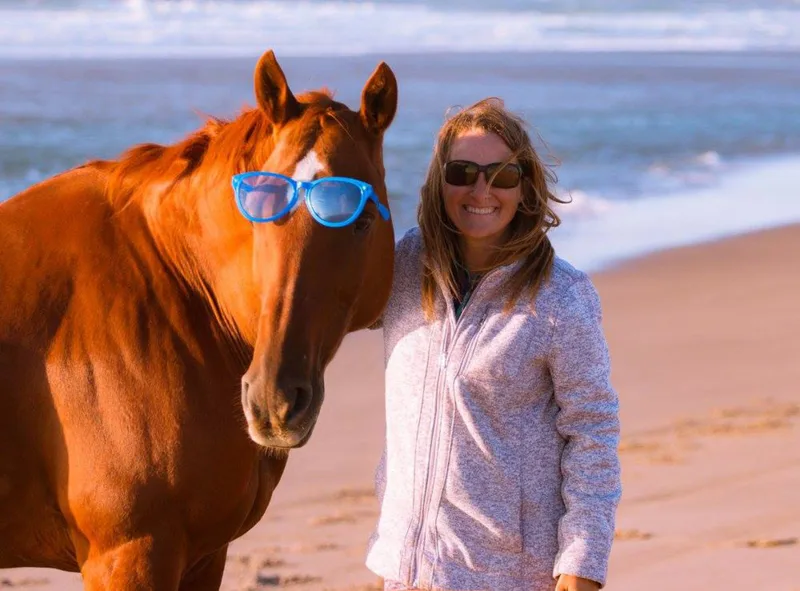By Rachel Sugar @rtsugar
The oily cakes in First Cow are not aspirational. They inspire hunger, maybe, but not lust.
Half-formed and sizzling in a vat of oil, they look like deep sea creatures or fetal aliens. Finished and laid out for sale, they look very, very oily. This sounds like an insult, but it isn’t. Have you had oil? It’s great.

They are rustic. They are wholesome. For Cookie and King-Lu—partners in survival first, business second—the cakes seem to be their ticket to a better future. For the weathered men in the film’s wilderness camp who line up to buy them, they are a sweet reprieve from brutal frontier life. “It tastes of England,” says the local governor, digesting wistfully. “Tastes like something my mama made,” agrees a bearded man, chewing sensually. If I were a hard-laboring settler in the Oregon Territories, I thought, sitting on my sofa, drinking flavored seltzer without pants on, I would definitely pay several silver pieces for these.
I’m not, though. One of the great disappointments of modernity is how many things you still have to do yourself. But as an amateur doughnut enthusiast—which is to say, a competent home cook who very much enjoys eating doughnuts—I was willing to make the sacrifice. It was not easy. The first problem was that, for a movie with a cake subplot, it doesn’t share the specifics of how to make them.
Oily cakes are not exactly doughnuts, but they are not not doughnuts, either. What is a doughnut, even? Scholars cannot decide. Is a zeppole a doughnut? A cruller? A churro? “In fact, it is not all that clear what constitutes a doughnut as distinctive from many other pastries,” writes anthropologist Paul R. Mullins in Glazed America, a cultural history of the form. Is a beignet a doughnut? Are paczki?
What is a doughnut, even?
If there was a single lineage, which there isn’t, it might be the Dutch “olykoek”—an oily cake, one might say—which was apparently doughnut-like enough that in his 1809 History of New York, Washington Irving used the terms interchangeably. “I think they’re in the same family,” says Fany Gerson, doughnut master and founder of Dough Donuts, when I ask her to adjudicate. “We don’t need to get hung up on labels.”
I Googled “oily cakes.” I learned that “an oily cake” is a common baking mishap.
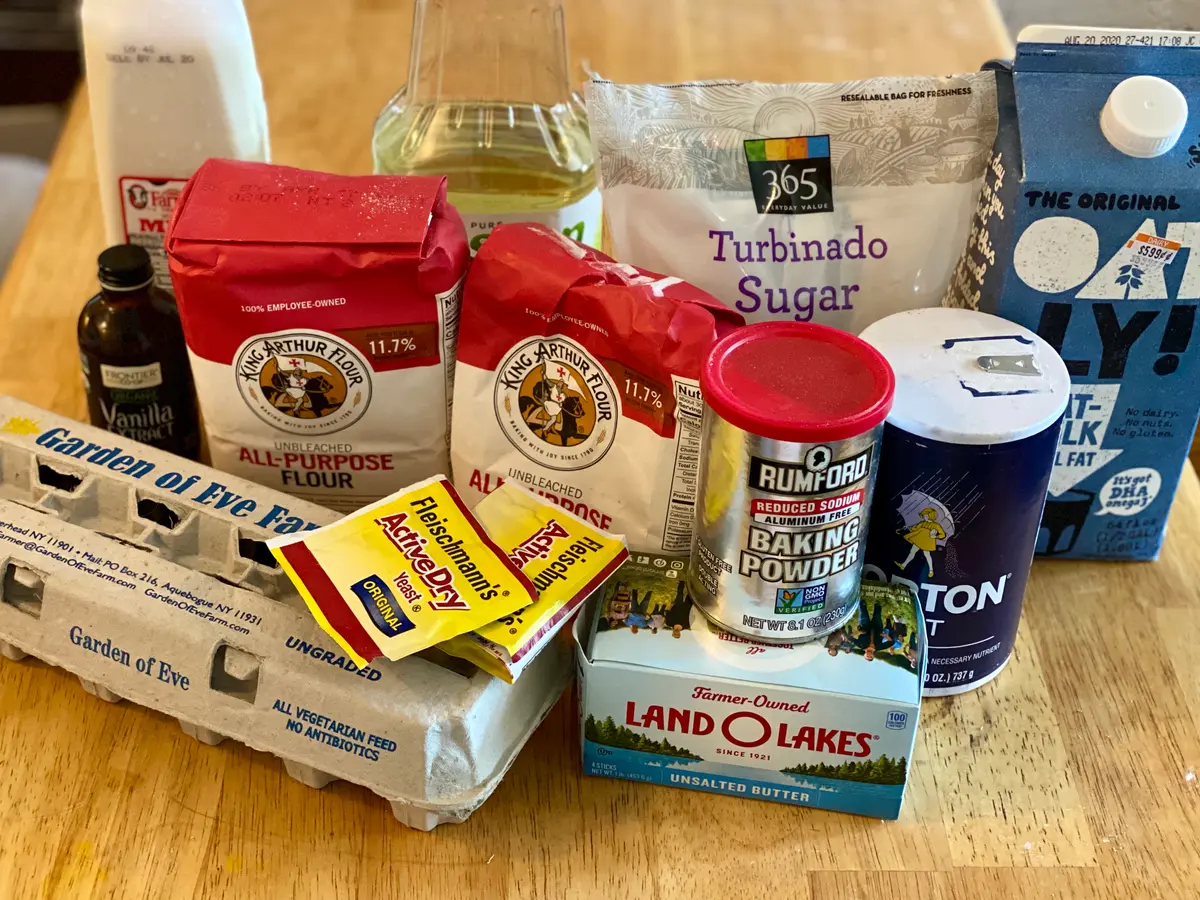
I also found a recipe: Dan Kois made the oily cakes for Slate using instructions straight from director Kelly Reichardt, who developed it with co-writer Jonathan Raymond based on period cookbooks. That’s about as definitive as it gets, I thought. Though I did worry, staring at production stills of oily cakes, that perhaps fried pastry had... progressed somewhat since 1820. Then I spent several more hours reading historical recipes for doughnuts to delay dealing with the obvious: I do not have a cow.
In the movie, Cookie and King-Lu steal milk from the governor’s cow (the first cow to arrive at the camp) in order to make the oily cakes, but I don’t know any cows, and certainly none that would allow me to milk them in secret under the cover of darkness. I am also extremely lactose-intolerant, so I used oat milk, which I stole from my refrigerator.
Then I spent several more hours reading historical recipes for doughnuts to delay dealing with the obvious: I do not have a cow.
So here is what you do: Beat two eggs, ideally from chickens you know personally, and then you add a lot of melted butter and some milk—warm, I assume at udder temperature—and then you mix that up with active yeast you’ve dissolved in water, flour, a pinch of salt, and a lot less sugar than you’d think.
What you’re supposed to do after that is melt a staggering amount of lard in a dutch oven. What I actually did was heat a vat of canola oil, because that is what was at my local grocery store and there is a pandemic. And isn’t that the pioneering spirit, really? Making do with the limited resources available in these lean times?
Then I tried to confront my fear of frying. (“It seems dangerous,” Cookie says, when King-Lu first proposes the cake. “So is anything worth doing,” King-Lu tells him.)
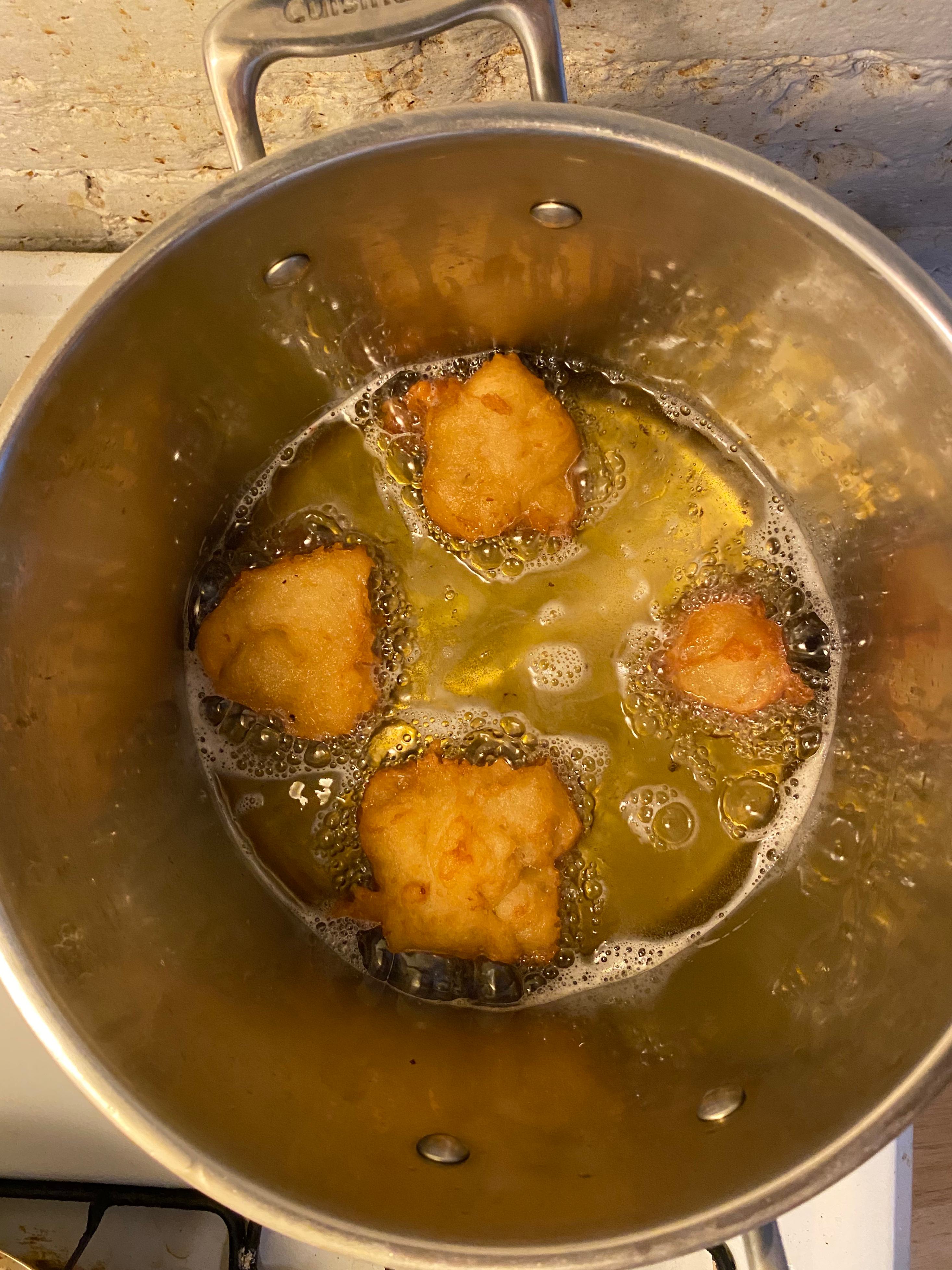
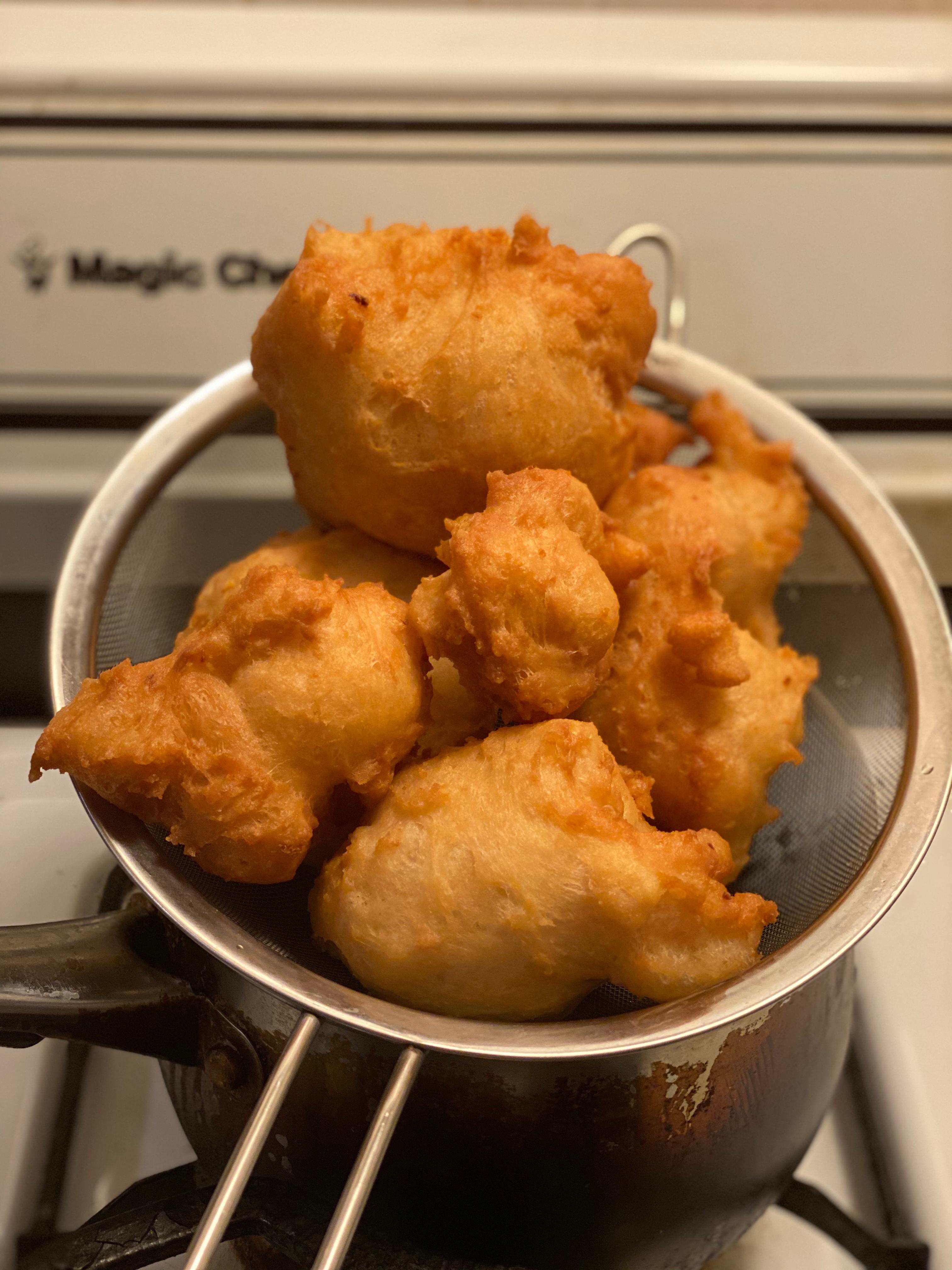
I spooned my first cake into the oil. Gerson estimated that should take around four minutes, and I found that to be true. Your cakes will sink at first, and then float up to the top of the oil a few seconds later. Mine bobbled, puffed, and browned. I did not burn myself. I did not set off the smoke detector. On the inside, it was raw. This, Gerson would tell me later, is what happens when your oil is too hot. I solved the problem by eating only the outside. It tasted fried.
This was all wrong. If I was going to make a recipe from a movie called First Cow, oat milk wouldn’t cut it. I put the remaining dough in the refrigerator and went back to the grocery store, where I found a half gallon of milk with a picture of a cow on it. I took a nap. I watched the movie one more time. I talked through the recipe with Gerson, who told me it sounded weird: “It calls for active yeast, but then it doesn’t give the yeast time to rise.” The recipe struck her as a little plain, given my access to a modern grocery store. What if I added lemon zest, or vanilla, or nutmeg? Instead of drizzling with honey and sprinkling with cinnamon at the end, I might infuse some honey with cinnamon and orange, or mix the cinnamon with powdered sugar. (Ultimately, I was timid here, and regretted it. Remember: Anything worth doing is dangerous!)
Refrigerators, it turns out, do not stop time. The dough rose. I could knead it, sort of, if I wanted to. I panicked.
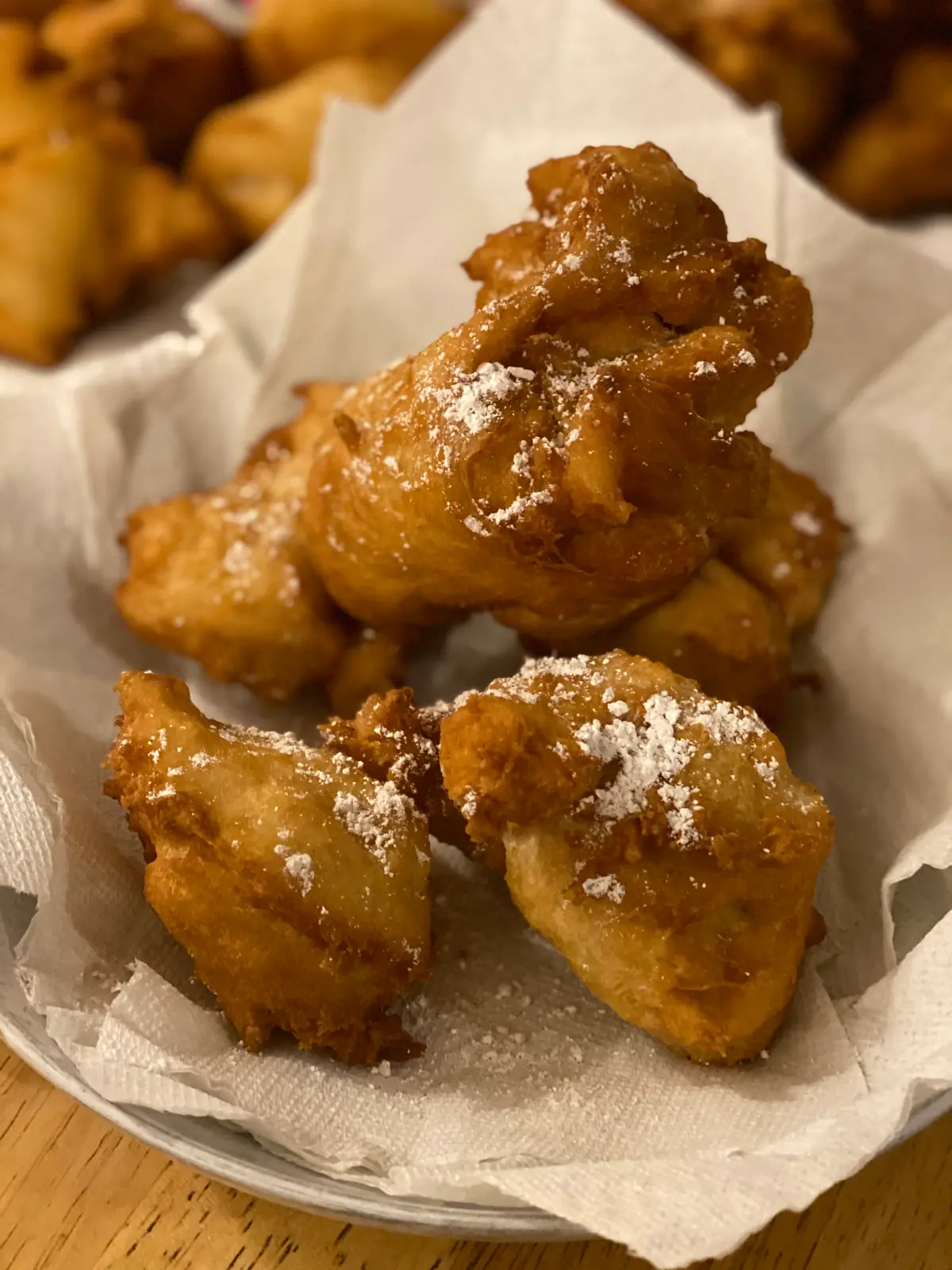
So I made another yeast batch, in case I’d ruined the other one. I made lemon oily cakes and vanilla-cinnamon oily cakes. I fried and fried and fried until the oil stopped frying and I ran out of surfaces in my house to put cakes on.
In the end, this is all a parable about how sometimes accidents lead to innovation, because the risen yeasty doughnuts were, by far, the best ones. The others were all fine—I would be extremely happy to eat them, were I trapped in the 1820s-era wilderness—but the refrigerator-chilled, ultra-yeasts were a triumph: rich and soft and comfortingly doughy, like deep-fried challah or county fair brioche. They were, you might even say, distinctly doughnut-like. They did not especially remind me of England or my mother, but certainly, they would be enough to keep me going, metabolically and spiritually, through one more unforgiving night.


